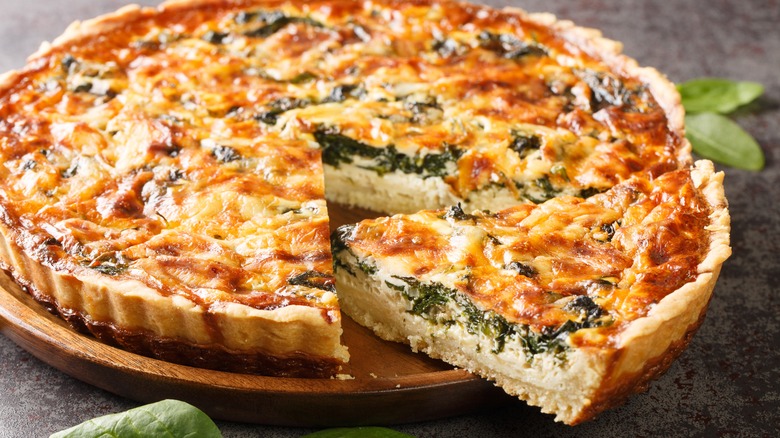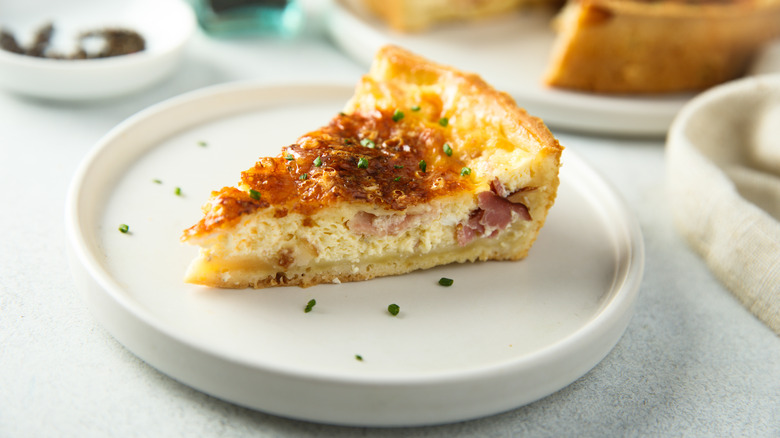The History Of Quiche In The US
The heyday of quiche in the United States may have been the 1970s and 1980s when it became so popular and deviated so much from the original French version that it became the butt of jokes, inspiring the book title, "Real Men Don't Eat Quiche." According to The Rambling Epicure, French quiche Lorraine originated as a tarte with a creamy egg custard and had a thin, buttery, and flaky crust.
While quiche Lorraine may be one of the most famous, there are many kinds of quiches that incorporate different cheeses, vegetables, and meats. According to Martha Stewart, the base for quiche is a savory custard filling made of eggs, heavy cream, whole milk, salt, and pepper. One of the most popular meats to be used in quiche is bacon, which the publication advises can be combined with spinach or scallions. However, quiche is highly adaptable to what is in season or in the refrigerator, such as the spring quiche with fresh spinach, leeks, goat cheese, and arugula. However, it is quiche's adaptability that made it a dumping ground for odds and ends, making it an item of scorn for some throughout American history, according to a Los Angeles Times' article.
More casserole than refined quiche
When quiche grew in popularity in the U.S., the crust was often larger and soggier than the French version. Also, many ingredients considered conventionally inappropriate were put in quiche, such as raw mushrooms and broccoli, which release liquid as they cook and will make the quiche soggy, per the Los Angeles Times. The Rambling Epicure states that the American quiche of the '70s and '80s was a pie similar to a casserole because of its heavy-handedness. Pastry Chef Nick Malgieri (via the Los Angeles Times) equates how quiche has been traditionally treated in America to how the country has approached pizza: Anything goes. He favors a simple filling and says there are appropriate vegetables that can be added.
Quiche's falling out of popularity is punctuated by the book "Real Men Don't Eat Quiche," written by Bruce Feirstein in 1982. It is a humorous look at masculinity in the United States, reports Los Angeles Times. While quiche may have fallen out of favor for a time, it again rose in popularity during the 1990s as it returned to its roots with a crispy crust and a composed filling. Whether you make the classic quiche Lorraine or get a little more experimental with ingredients, Fine Dining Lovers states that quiche is good served hot or cold and eaten for breakfast, brunch, or as a light meal any time of the day. Just remember to let your quiche rest before slicing yourself a large piece of deliciousness.

